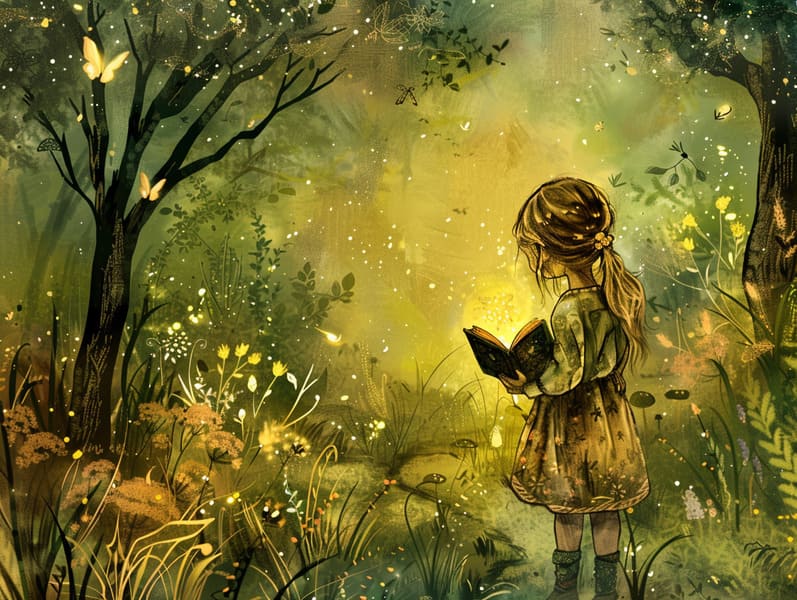The Genesis of Ancient Fairy Tales and the Perpetual Charm.
The Genesis of Ancient Fairy Tales and the Perpetual Charm.
Blog Article

Grimm's fairy tales have enduring presence. These stories have been told from one generation to the next ages before they were ever transcribed. They developed from a variety of cultures, including Eastern traditions. They were initially narrated among grown-ups, often carrying themes and messages concerning the societal norms and beliefs of the time.
The renowned Brothers Grimm, Jacob and Wilhelm Grimm, were among the first to collect and release many of these beloved narratives. Their volume, "Grimm's Folk Tales," included classics like "The Story of Cinderella," "Hansel and Gretel," and "The True Story of Snow White," which have since become essentials in the world of iconic fairy tales. Similarly, Hans Christian Andersen's delightful stories, such as "The Story of the Little Mermaid," and "The Story of the Ugly Duckling," have captured hearts worldwide, guaranteeing their place in the pantheon of classic fairy tales.
Though they are centuries old, these stories remain as pertinent as ever, especially as children's night stories. These whimsical stories are now available in multiple formats, including colorful picture books, delightful animations, and internet fairy tales.
Their lasting appeal can be linked to several fascinating points:
Vital Lessons: Traditional fairy tales often whisper important moral lessons. Narratives like "The Boy Who Cried Wolf" teach the merit of integrity, while "The Hare and the Tortoise" highlight the merits of persistence and unpretentiousness. These stories offer the young clear distinctions between right and wrong, shaping their moral compass in a subtle yet important way.
Warmth and Understanding: Ancient fairy tales frequently showcase heroines facing problems and hurdles, encouraging young readers to empathize with their struggles and champion their triumphs. For instance, "The Story of Beauty and the Beast" teaches us the merit of appreciating inner worth to know the inner core of a individual, enhancing kindness and understanding.
Cultural Knowledge: Many old fairy tales are steeped in the cultural contexts from which they bloomed. Understanding these narratives can provide captivating looks into different beliefs, fostering a sense of global understanding and knowledge.
Creativity and Fantasy: The fantasy-filled elements in classic fairy tales—supernatural elements—fuel children’s creative dreams. These narratives move readers to otherworldly realms, stimulating fantasy ideas and a sense of wonder that continues a lifetime.
Timeless fairy tales are not only fantastical but also instructive. They function as charming tools in cultivating various mental and emotional abilities in little ones. When timeless fairy tales are spoken, they cultivate speaking abilities by offering new lexicon and elaborate sentence structures. This practice also promotes hearing perception and mindfulness, as the young concentrate deeply, anticipating to see what happens next.
Furthermore, deliberating the themes and characters of classic fairy tales can sharpen intellectual skills and problem-solving abilities. Kids are educated to discover patterns, expect results, and make sense of cause and effect. These reflections also assist the young express their thoughts and feelings, promoting their emotional intelligence.
In today’s technological age, the presence of web-based fairy tales has made these tales more within reach than ever. Websites and programs make available vast collections of classic fairy tales that can be viewed or listened on anytime, anywhere. Fairy tales voiced are particularly widespread, supplying an interactive way for children to engage with these fantastical tales. Sound books and read-out-loud videos move characters and settings to life, often paired with captivating audio effects and harmonies that heighten the narrative journey.
The timeless fascination of traditional fairy tales lies in their ability to adapt to today's world while keeping their core messages. Contemporary reinterpretations of these stories often highlight more different figures and modern settings, making them relatable to today’s audience. However, the core values of valor, goodness, and integrity remain unchanged, continuing to appeal to children of find it here all ages.
Old fairy tales also offer a sense of security and homeliness. They furnish a ordered narrative with a evident beginning, middle, and end, often ending with the termination of conflicts and the triumph of rightness over wrongness. This constancy can be solacing for little ones, distributing a sense of steadfastness in an variable world.
Timeless fairy tales continue to spellbind and guide new generations, maintaining their appeal and importance in modern society. As children's night stories, they allow a perfect blend of enchantment and education, enriching moral values, empathy, and creativity. The existence of online storybooks and the prevalence of fairy tales voiced validate that these classic narratives remain reachable to new generations.
By preserving and distributing these fairy tales, we continue to praise the rich tapestry of human imagination and cultural heritage. Whether you are perusing a vividly illustrated book, discovering a digital collection, or listening via an read-aloud book, the charm of timeless fairy tales is always within reach. These stories remind us of the lasting ability of tales and its ability to connect us across eras and regions.
If you are delving into a artistically illustrated book, perusing a web-based collection, or hearing an audio story, the captivation of popular fairy tales is always within reach.
These narratives show us of the perpetual nature of storytelling and its ability to hold us together across epochs and places, forging a link that captivates and teaches alike.